There is no secret to an Authentic Italian Sunday sauce. No grandma or nonna can tell me any different. I'm here to break the silence and provide you with my not-so-secret Sunday sauce with the best tips, simple ingredients, and just a LONG simmer.
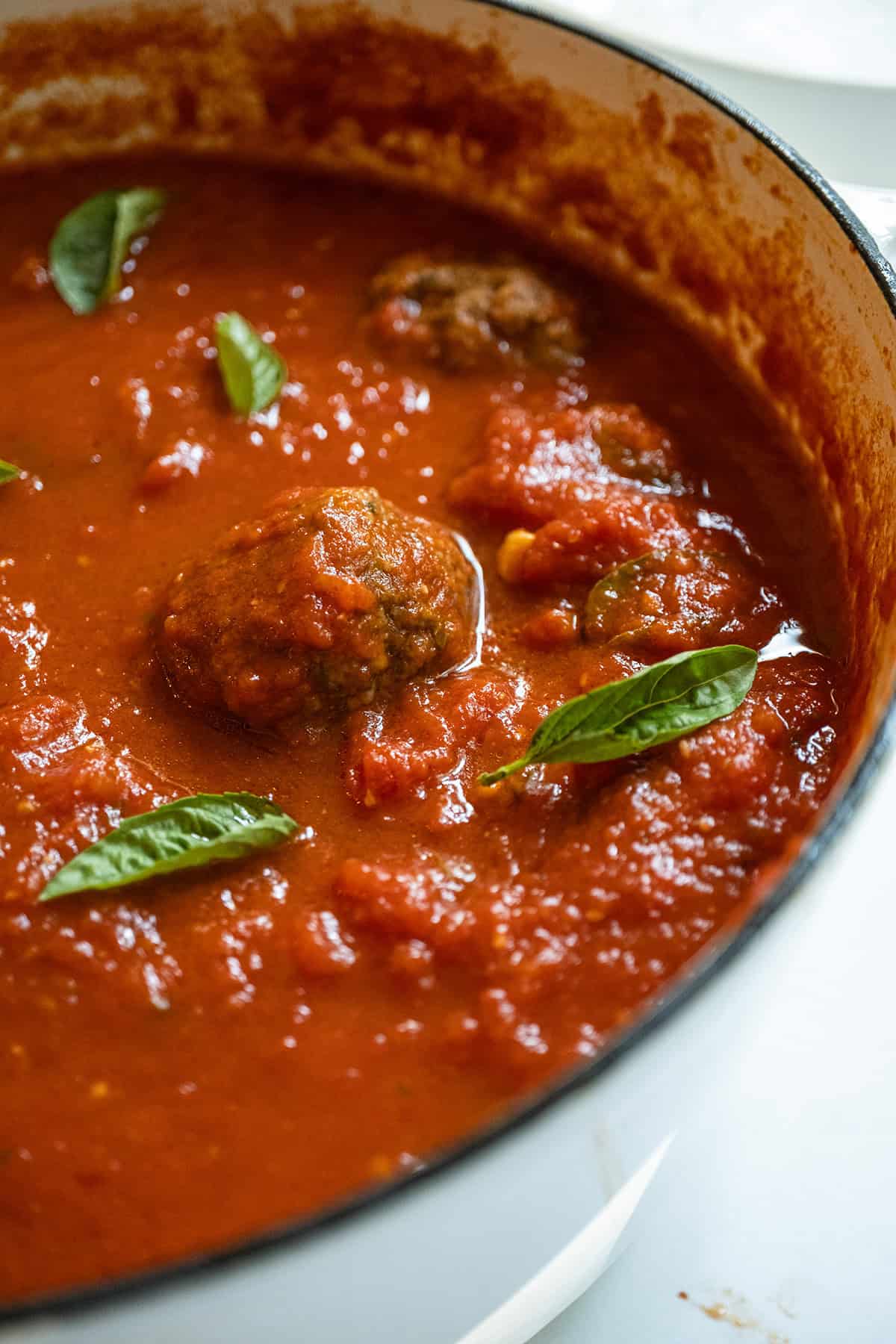
If you're into all-day Sunday cooking affairs, you may like my Bison Ragu or Authentic Bolognese!
Jump to:
There are No Secrets to Sunday Sauce
Everyone thinks they make the best Authentic Italian Sunday Sauce. I'm not saying mine is the best and you'll never taste anything different, because the truth is, you're always going to think your mom's sauce is the best. But anything you spend all day cooking, you want to taste good. Braised dishes like this or Bison Ragu are the perfect Sunday meals!
Sunday sauce, as important as the flavors and the simple ingredients are, is about nostalgia. You're always going to love your mom's, dad's, or grandparents' recipe the most because it will remind you of sitting around the table on Sunday afternoons with your family. Grandpa asking for the dessert, Grandma talking smack about her neighbors, or your parents arguing about whether you should fry or bake meatballs.
That's why I want to help you build your own Sunday Sauce recipe. If you want to learn how to perfect a Sunday Sauce, read through the blog and learn about each step and ingredient we add to the sauce! If you're looking for something quicker check out The Ultimate Guide to Marinara Sauce for a simple and delicious sauce.
Ingredient Notes and Substitutions
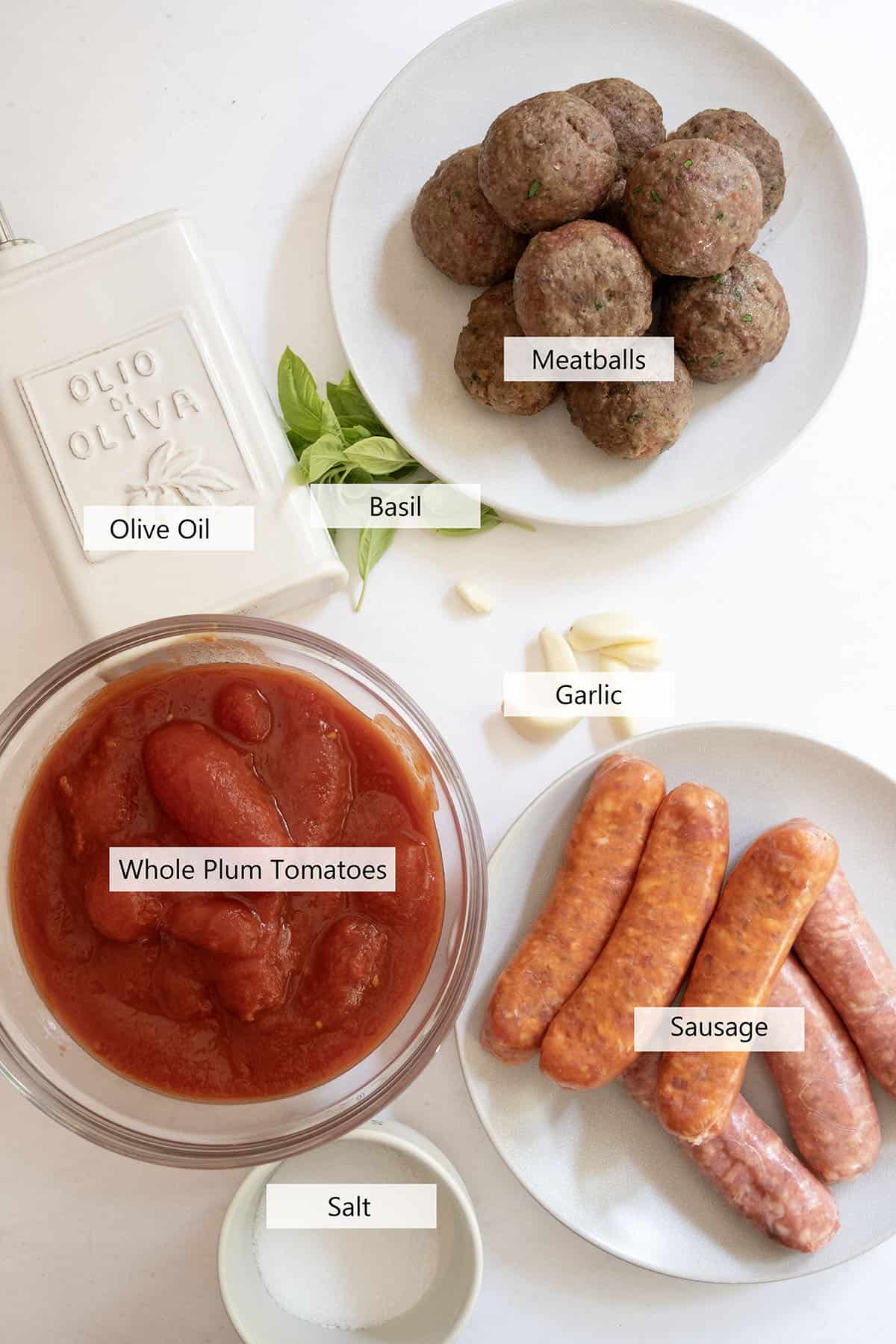
- Garlic. Use fresh garlic. Anything else will end up giving you a chemical taste. You can opt for pre-peeled but the fresher the better. As soon as you slice garlic, the membranes break and you begin to smell the garlic. The longer it sits out the more pungent the flavor
- Extra Virgin Olive Oil. Use a high-quality olive oil. It's great when you can see where the olives came from or if only one type of olive was used.
- Tomato Paste. Sauteing the tomato paste allows it to caramelize and infuse a more intense flavor into the sauce.
- Whole Plum Tomatoes. I prefer to use San Marzano Tomatoes. I like Cento or Nina. They are both fairly consistent. My mom always used Tuttoroso.
- Basil. Always use fresh basil. Stir in half at the beginning and half at the end. Saving a little to finish the sauce will give the sauce an extra burst of flavor.
- Salt. I slowly add salt throughout the cooking process and taste as I go.
- Meat
- I put Classic Italian Fried Meatballs in 95% of every sauce I make. They are the perfect meat to pair with a sauce.
- Sausage is my second favorite to add. I always make my own sausage which you can do with my How to Make Homemade Italian Sausage article.
- Some other meats I enjoy in my sauce are neckbones, short ribs, or pork ribs. I love to make Italian Short Ribs with my Sunday Sauce.
- On holidays, I like to add Authentic Italian Braciole to the sauce. It's made with flank steak and it's so tender.
- Additions: If I have any available, I add a Parmigiano rind to my sauce. It adds a little bit of a pungent and nutty flavor to the sauce.
Choose your ingredients and how you want to make your sauce so that you can develop something that is your own and specifically built for your family!
*Please see more information about the ingredients below in the recipe card.
How to Make an Authentic Sunday Sauce
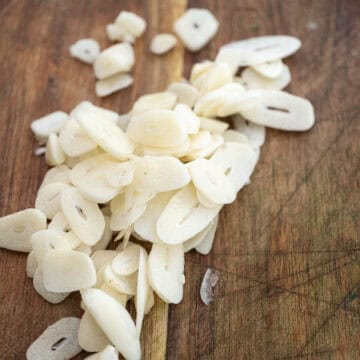
Step 1: Slice the garlic as thin as possible. Try to be consistent with your slices so that they cook evenly.
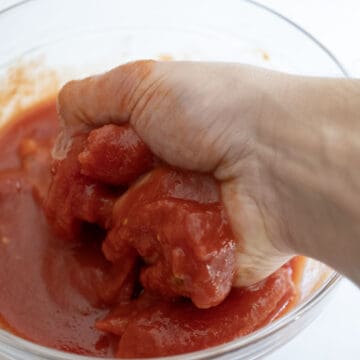
Step 2: Hand-crush your San Marzano tomatoes into a bowl.

Step 3: Sear your meat. Whether you're adding meatballs, sausages, or something else, sear or parfry them, and set aside. With meatballs, I usually parfry but with sausage, I'll either sear them or boil them depending on where I get the sausage.
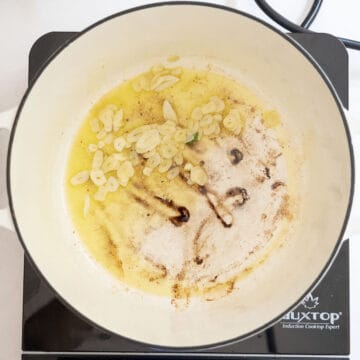
Step 4: In the same pot, heat extra virgin olive oil over medium heat. Once hot, stir in the garlic. Stir often for 1 minute.
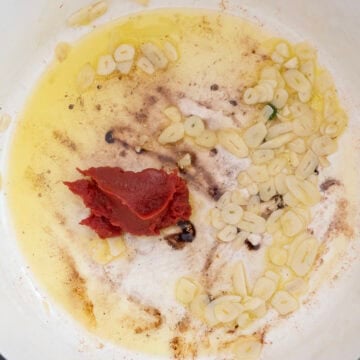
Step 5: After 1 minute, add tomato paste away from the garlic. Allow the tomato paste to sit while you continue stirring the garlic for 1 more minute. Stir the garlic and tomato paste together to combine. Let the tomato paste begin to caramelize.
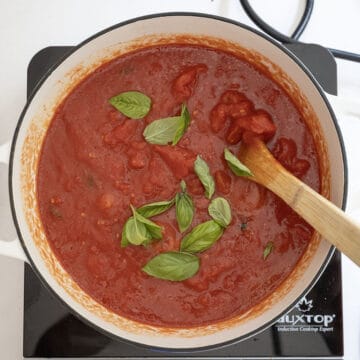
Step 6: Add the tomatoes, half of the basil, and ½ teaspoon of salt. Bring the sauce to a simmer.

Step 7: Once the sauce is simmering, add your meat. Close the pot and let the sauce simmer on low for 3 hours, stirring every 30 minutes or so. Taste often and add more salt when necessary.
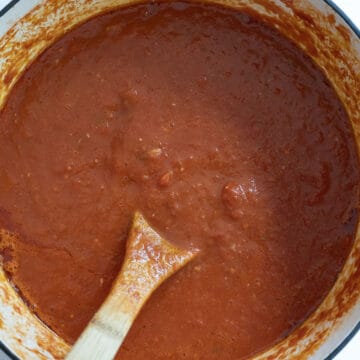
Step 8: Remove the meat from the sauce. I like to slightly blend my sauce to smooth it out, but you can also leave it a little chunky. My wife loves Sunday sauce to be a little chunky.
After you finish the sauce, boil your favorite pasta. Strain the pasta and return it to the pot. Add the sauce into the pot with pasta and stir well while the pot is still hot. This will make sure the pasta absorbs some of that sauce you made.
Pro Tips!
- The true secret to an Authentic Italian Sunday sauce is time and patience. Tomatoes have to cook to taste good. These tomatoes you are using are (sort of) raw. They have to completely cook through.
- Stir often to make sure it's not burning to the bottom of the pot. I haven't seen wrath quite like my mom the time she asked me to stir the sauce while she was out and I forgot.
- Add salt to taste periodically. Sunday sauce will need more salt as it cooks. Just add a little bit at a time and taste to see how it is.
- When you add the tomato paste, you're letting it caramelize on the pan to release the flavors and break down some of the natural sugars.
- Don't add sugar. Cooking the sauce for a long period of time will balance out the acidity.
- Always finish with basil to get the final pop of flavor!
- If you prefer a smoother sauce, use an immersion blender at the end to pulse the sauce to your preferred texture.
Recipe FAQs
Because on Sunday, this is what an Italian household will smell of. As soon as football season would start, we'd be back to having thick Sunday sauces every week! In the summer we'd have a lighter sauce like a pomodoro on Sunday.
Yes! Freeze the sauce in a Ziploc bag or air-tight container and store it to use for next time. I like to make double batches so it's less work the next time.
Bolognese is made with ground meats and vegetables like carrots, onions, and celery. Sunday sauce is a smoother sauce braised with meat like meatballs and sausage that are removed before serving.
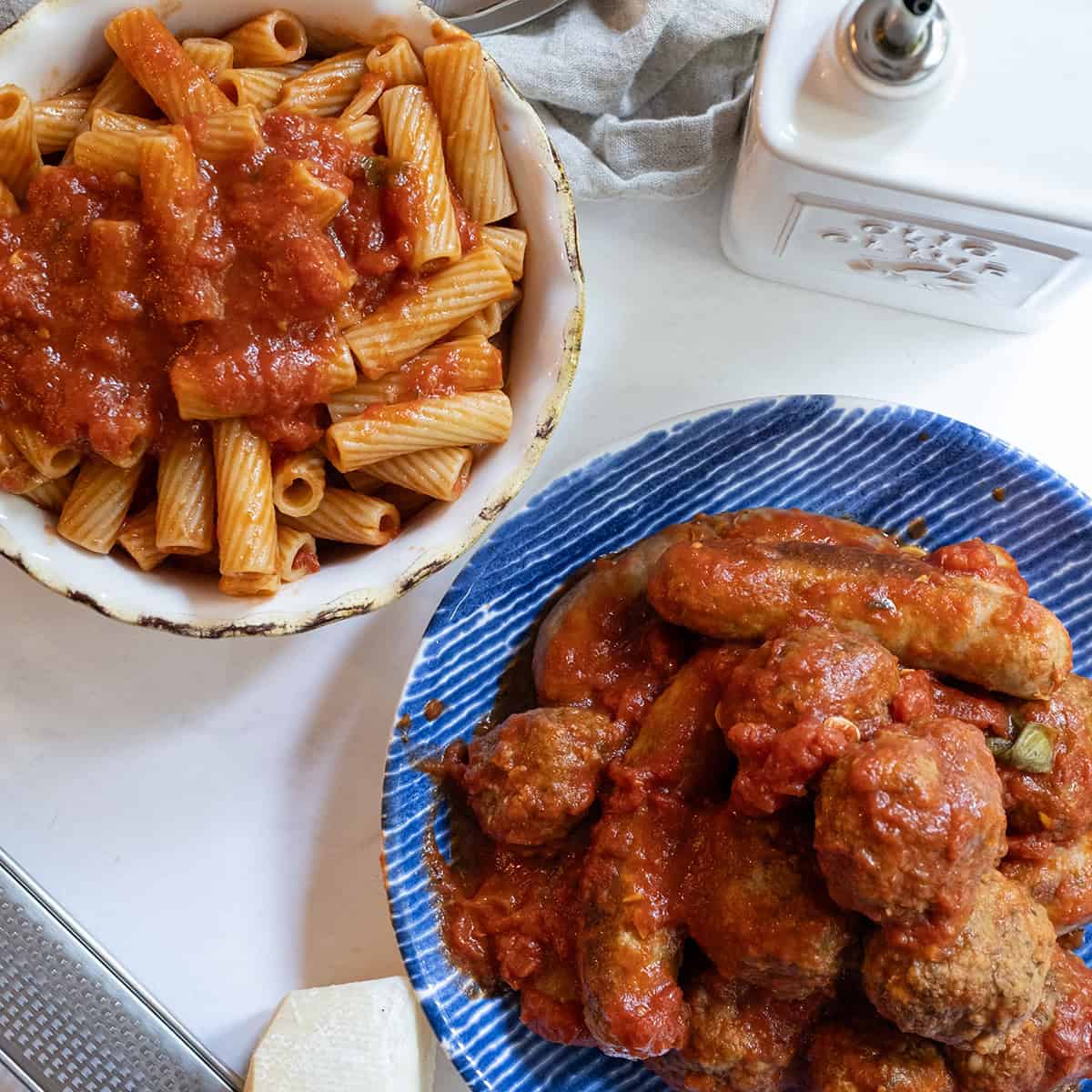
What to Serve with This Sauce
We always serve this Authentic Italian Sunday Sauce over pasta with a plate of meatballs and sausages. This classic Italian dish is nostalgic and comforting and always reminds me of home! Here are some of our favorite side dishes to serve it with!
- My favorite vegetables to serve it with are Sauteed Rapini with Garlic, Garlic Parmesan Green Beans, or a Caesar Salad with Traditional Caesar Dressing.
- You can also serve it with some Fresh Italian Bread and Crispy Italian Chicken Cutlets.
- Before dinner, we always have some easy Italian appetizers like Eggplant Caponata or Marinated Eggplant and Onion.
- Definitely finish dinner off with an Italian dessert like Rainbow Cookie Cake or Pistachio Cream Tiramisu!
Some Sunday Sauce Meat Recipes!
Follow us on Instagram @vindelgiudice for more videos and recipes! Leave a comment below and let us know the "secrets" to your sauce...if you're willing to share!
📖 Recipe
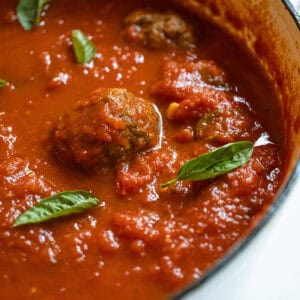
Authentic Italian Sunday Sauce
Equipment
- 1 large pot
- 1 immersion blender or blender
Ingredients
- 8 cloves garlic, minced
- 3 tablespoon tomato paste
- 3 24 oz cans san marzano peeled tomatoes
- 9 basil leaves
- 1-2 tablespoon kosher salt
- 10 meatballs
- 6 Italian sausages (hot, sweet, or both)
- 3 tablespoon extra virgin olive oil
- 1 lb pasta
Instructions
- In a large pot, heat extra virgin olive oil over medium heat. Once hot, stir in the garlic. Stir often for 1 minute. After 1 minute, add tomato paste away from the garlic. Allow the tomato paste to sit while you continue stirring the garlic for 1 more minute.
- Pour in 3 cans of san marzano tomatoes. Bring the sauce to a simmer. Use the back of the wooden spoon to break apart the tomatoes. It will be easier to do this once they are hot. Stir in the basil and salt and bring the sauce to a simmer.
- Keep the sauce at a simmer and add your meatballs and sausages typically par-cooked. Allow the sauce to simmer on low for 3 hours.
- Prepare your choice of pasta. Remove your meatballs and sausage. If you prefer a smoother sauce, now would be the time to pulse the sauce with an immersion blender. Combine sauce with pasta in the pot you cooked the pasta in and serve with fresh parmesan.
Notes
- The true secret to the not-so-secret Sunday sauce is time and patience. Tomatoes have to cook to taste good. These tomatoes you are using are (sort of) raw. They have to completely cook through.
- Stir often to make sure it's not burning to the bottom of the pot. I haven't seen wrath quite like my mom the time she asked me to stir the sauce while she was out and I forgot.
- Add salt to taste periodically. Sunday sauce will need more salt as it cooks. Just add a little bit at a time and taste to see how it is.
- When you add the tomato paste, you're letting it caramelize on the pan to release the flavors and break down some of the natural sugars.
- Don't add sugar. Cooking the sauce for a long period of time will balance out the acidity.
- Always finish with basil to get the final pop of flavor!

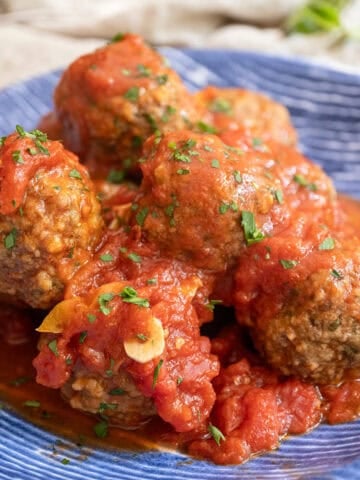

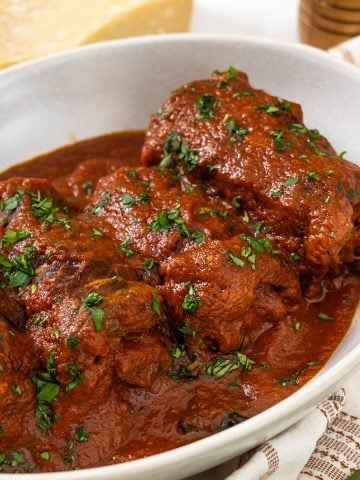
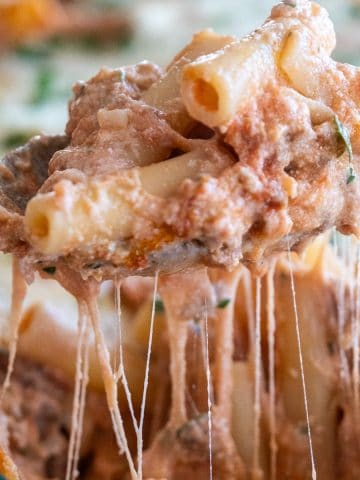
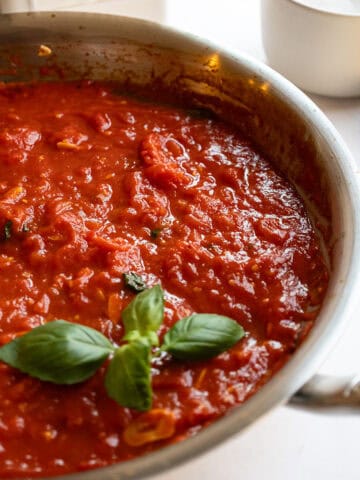
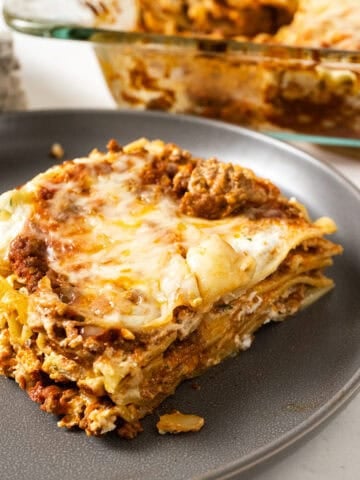
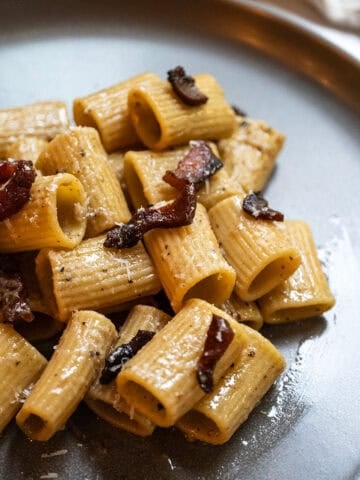

Vinny
Hey Vinny , this is Vinny , this is excly how my nonna made hers from Naples. Xept she always had some sort piece of pork in it ….ribs, baby butt, country ribs.
Ann E Peters
I have been using basically the same recipe as yours for years. Supposedly my grandmother got it from a friend of hers. Lately when I make it I don't think it tastes as good. Do you think it could be the tomatoes? I have been using Cento. What kind do you prefer?
Vinny
I use Cento, SMT, or Bianco
Gina Woods
This recipe is very similar to my mother’s. She did put a whole onion in the sauce for flavor and a whole carrot to reduce acidity and Parmesan rind (that is put in the freezer when you finish your Parmesan cheese) was something the kids have added over the years. Tomato paste in her eyes was a no-no, I’m not sure why. Her secret to the consistency of the sauce was a good heavy pot. When she died all the kids wanted her “gravy” pot. My brother found the same pots on Etsy. They were called hammered aluminum. I love my gravy pot I could never get my gravy consistency like my mom’s until I started using it . Thank you for sharing your recipe and your reasons for your additions. My mom even added a bit of water to her tomato cans and swished it around. She also insisted that the fat from frying your meat was added for flavor. Mangia!
Vinny and Marisa
Glad you can relate! I love hearing why people have specific tips for their recipes.